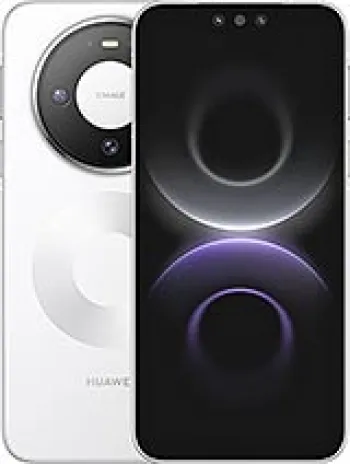
Network
The Huawei U8180 IDEOS X1 operates on GSM / HSPA technology. It supports 2G bands of GSM 850 / 900 / 1800 / 1900 and 3G bands of HSDPA 900 / 2100. The device offers download and upload speeds of up to 7.2 Mbps and 0.384 Mbps respectively, sufficient for basic browsing and social media connectivity during its time.
Launch
Announced in May 2011, the Huawei U8180 IDEOS X1 was released to a market keen on entry-level smartphones. Its production has since been discontinued, like many devices of its generation.
Body
The phone measures 104 x 56 x 13 mm and weighs a mere 100 grams, making it highly portable and easy to hold. It uses a Mini-SIM, which was standard during its time of release.
Display
The Huawei U8180 IDEOS X1 features a 2.8-inch TFT display with 256K colors. The screen's resolution is 240 x 320 pixels, with an approximate pixel density of 143 PPI. This setup provides basic visual clarity but lacks the sharpness seen in today's phones.
Platform
Powered by the Android 2.2 (Froyo) operating system, the phone runs on a Qualcomm MSM7225 Snapdragon S1 chipset. It houses a 528 MHz ARM 11 CPU which was standard for smartphones of its era. Notably, it does not include a GPU, limiting its capacity for gaming and intensive graphic tasks.
Memory
The smartphone includes 512MB of internal storage coupled with 256MB of RAM. For users requiring more space, there is a microSDHC card slot allowing for additional storage, which was a crucial feature for overcoming the device's limited native storage capacity.
Main Camera
The single 3.15 MP rear camera of the Huawei U8180 IDEOS X1 includes video recording capabilities at 320p@24fps. While this might not compete with modern-day cameras, it served basic photography needs adequately for its time.
Selfie Camera
The Huawei U8180 IDEOS X1 does not feature a front-facing camera, reflected in its design aimed more towards basic utility rather than capturing selfies or video calling, which weren't prevalent in the entry-level market back then.
Sound
Audio features include a loudspeaker and a 3.5mm headphone jack for easy listening with earphones or headsets. This was a standard inclusion in most phones of its time, providing basic sound output and input interfaces.
Communications
The Huawei U8180 IDEOS X1 supports Wi-Fi 802.11 b/g/n, offering wireless connectivity over available networks. Bluetooth 2.1 with A2DP and EDR facilitated short-range wireless data transfer. Furthermore, it has GPS with A-GPS for navigation and location services, an FM radio with RDS, and a microUSB 2.0 port for charging and data transfer.
Features
Equipped with basic sensors such as an accelerometer, proximity sensor, and a compass, the phone's hardware efficiently supports various user applications and functionalities like auto-rotate, call management, and orientation detection.
Battery
The phone uses a removable Li-Ion 1200 mAh battery, a common capacity for devices of this class at the time of its market entry. It supports a standby time of up to 336 hours and a talk time of up to 4 hours, decent statistics that met the average user's daily requirements back then.
Miscellaneous
Released in black, the Huawei U8180 IDEOS X1 was made available to consumers at approximately 70 EUR. This price point positioned it as an affordable entry-level smartphone option suitable for basic tasks and users transitioning from traditional mobile phones to smartphones.
Key Features of Huawei U8180 IDEOS X1
- Network Technology: GSM / HSPA
- Lightweight Design: 100 g (3.53 oz)
- Compact Dimensions: 104 x 56 x 13 mm
- Display: 2.8 inches TFT with 256K colors
- Expandable Storage: microSDHC card slot
- Camera: 3.15 MP Main Camera
- Audio: 3.5mm headphone jack and loudspeaker
- Connectivity: Wi-Fi 802.11 b/g/n, Bluetooth 2.1, and GPS
- Operating System: Android 2.2 (Froyo)
- Sensors: Accelerometer, proximity, compass
- Battery: Removable Li-Ion 1200 mAh battery with up to 336 hours standby
- Affordable Pricing: Approximately 70 EUR
Disadvantages of Huawei U8180 IDEOS X1
- Discontinued model.
- Low-resolution display with 240 x 320 pixels and ~143 ppi density.
- Outdated Android 2.2 (Froyo) operating system.
- Limited processing power with a 528 MHz ARM 11 CPU.
- No GPU for graphics processing.
- Limited internal memory with 512MB storage and 256MB RAM.
- Only a single 3.15 MP main camera with low video resolution (320p@24fps).
- No front-facing camera for selfies.
- Small 2.8-inch display size with ~41.7% screen-to-body ratio.
- Limited battery capacity with a removable Li-Ion 1200 mAh battery.
- Short talk time of up to 4 hours.

View Also
More Phones
All Rights Reserved +14268 Phones © Mobilawy 2025

























